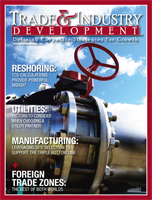Manufacturing: Furthering the Triple Bottom Line Through the Site Selection Process
Regardless of personal opinion, any astute observer of consumer culture and corporate strategy should acknowledge sustainability is affecting business activities. Despite the cloud of catchy, feel-good buzzwords that have overshadowed any meaningful discussion of the issue, the impact “sustainability” has on corporate goals and project initiatives has been real and tangible. Driven by consumer expectations, marketing and the bottom line, language about sustainability has found its way into virtually all corporate charters and project goals. In fact, a 2010 KPMG/The Economist Intelligence Unit survey of over 350 global executives showed as many as 72 percent felt the benefits of eco-friendly initiatives outweighed the costs. In manufacturing, sustainability initiatives typically manifest themselves in one of the following ways: highly efficient or LEED certified buildings, optimization of supply chain, recycling programs and/or renewable power generation. Typically these initiatives are addressed during the final implementation phase of a new project (facility construction, remodeling, plant expansion, etc.). However, waiting until final implementation to address sustainability ignores the fact that all of these endeavors can be impacted, positively or negatively, by project location and physical site. For example, site characteristics can dramatically affect solar loading. Likewise, local utility programs can limit or enhance the potential for onsite or offsite renewable energy generation. In short, site selection can determine not only the success of manufacturing related sustainability initiatives, but more importantly, site selection can impact the cost and efficiency of implementation. more....


